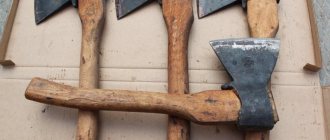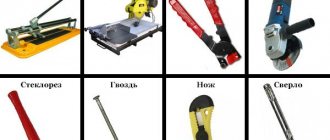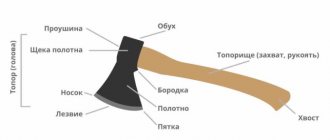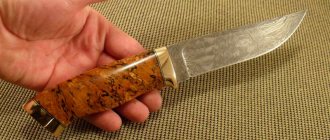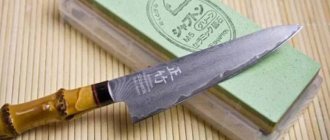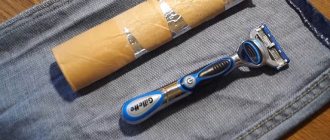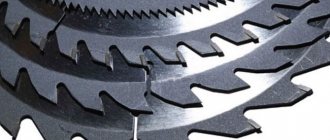Almost every home has an electric assistant that can quickly grind meat into minced meat of any consistency, help squeeze out juice, prepare original cookies or homemade noodles, pasta, and some craftsmen make meat delicacies. During operation, there comes a time when the question arises of how to properly sharpen a knife for a meat grinder. We will tell you what needs to be done for this in our article.
Design and principle of operation
The meat grinder consists of the following units:
- housings with a neck for loading and a cylindrical part for the location of the auger;
- auger;
- a knife attached to the auger;
- a fixedly fixed grille, which is fixed with a nut to the body;
- handles for rotating the auger.
The operating principle is as follows:
- The diced meat is loaded into a special receiving hopper.
- When the handle connected to the auger rotates, the meat from the hopper flows to the cutting tool, passes through it to the mesh holes, and then is fed out.
Meat grinder knives allow you to grind the original products and then use a mesh to give them the desired shape. Grids can be installed with different numbers and diameters of holes.
How often should you sharpen
The sharpening period directly depends on the use of the device and the amount of twisted meat or other products. If you use the meat grinder several times every week, the knife will last for about 1.5-2 months. While the blades are new, they can last 3 or 4 months. Then, no matter how reliable the knife is, it becomes dull and requires sharpening.
As soon as it becomes difficult for the meat to pass through the grate, and when the meat grinder is loaded you can hear the screw turning idle, the blades become unusable. The device is disassembled, washed and dried well. Only then can its blades be sharpened. The grille is always sharpened along with the knife.
The speed of cutting meat depends on how tightly the knife fits onto the grate. The more tightly they are pressed to each other, the faster the minced meat is obtained.
When is sharpening needed?
It is necessary to sharpen the meat grinder if it stops cutting meat, the hopper near the mesh is constantly clogged. Often dull cutting edges are caused by:
- the use of poor steel in the manufacture of a meat grinder;
- grinding meat with bones or tendons;
- storing equipment in a room with high humidity.
In some cases, the wear of the grate does not allow it to come into close contact with the blade, which also negatively affects the quality of meat chopping.
In such situations, the process of self-sharpening blades on a metal grid becomes ineffective. Even minor damage to the edges will reduce functionality. To verify their presence, just unscrew the side cover of the case and inspect the condition of the blades.
Rusted mesh and knife
Why do meat grinder knives need to be sharpened?
Depending on the frequency of use of the meat grinder, its blades lose their sharpness. This may occur due to the formation of small chips and depressions in the place where the movable and stationary cutting elements come into contact.
Knives in a meat grinder must be sharpened at certain intervals.
The most common reason for the unsatisfactory performance of a meat grinder is dull knives if they were originally made from low-quality raw materials.
Basically, the device works with a relatively soft product - meat. But when grinding, small bones or tendons fall onto the cutting edge of the blade, which leads to a gradual loss of sharpness. At the initial stage, you may find that the meat grinder begins to “chew” the meat, and soon after that it completely stops grinding it .
Also, if not properly cared for, the metal from which the knives are made begins to oxidize and rust. This also negatively affects their sharpness.
Today, manufacturers produce all components for small household appliances in sufficient quantities. You can easily buy a new sharp knife for a meat grinder, especially an electric one. But this will require additional costs, in addition, the problem is often discovered at the moment when the cooking process has already begun.
Cutting elements for electric and mechanical meat grinders have approximately the same shape and metal alloy composition. The only difference is that in a mechanical device the knives are rotated manually, while in automated devices there is a built-in motor that performs a similar function. Therefore, blades can be sharpened using the same methods.
Important! The frequency of sharpening knives should correspond to their dullness. As soon as you start to notice that the meat grinder is not grinding food enough or is simply crushing it, it is worth updating the edges of the blades.
Sharpening rules
When sharpening meat grinder knives, you need to consider the following rules:
- the abrasive tool must have a flat plane;
- The blades should be lubricated before sharpening to prevent scratches from falling chips or splinters during processing;
- to uniformly remove layers of metal, it is necessary to ensure uniform pressure over the entire area of the blade being sharpened;
- the plane of the metal mesh requires alignment so that when assembling the meat grinder there are no gaps between the rubbing planes above the permissible level.
How can you tell if a knife needs sharpening?
It is easy to guess that the knife has become dull by its operation. A blade that has lost its sharpness begins to wrap its veins around itself and stops cutting. The meat grinder often gets clogged, it has to be disassembled or cleaned using the reverse button.
Visually, scratches and traces of rust can be seen on the blunt edge. If you connect the knife and the grill, you can see a gap between them.
All these signs indicate that the knife needs sharpening.
Tools
To sharpen knives for meat grinders you need to prepare:
- sandpaper;
- abrasive stone;
- sharpening machine;
- lubricant;
- dry rag;
- GOI paste.
Sandpaper
Sharpening with a grinding wheel
An abrasive wheel for sharpening meat grinder parts can be purchased at any hardware or hardware store. It is very cheap, but it helps to sharpen cutting surfaces well. To sharpen the knife, you need to install it in its place in the meat grinder. The grinding wheel is inserted instead of the grid, the clamping nut is not tightened tightly. Then you need to rotate the meat grinder handle clockwise. Very soon the knife will regain its necessary sharpness.
Abrasive wheels for sharpening knives and meat grinder grates
The grille is also sharpened in the same way. Only now it is put in its place, and the abrasive wheel replaces the knife. The difference is that when sharpening the grate, the meat grinder handle can be rotated either clockwise or counterclockwise.
Advice! If you use these two sharpening methods at once, you can achieve maximum effect. To do this, you first need to sand the knives and grate with a grinding wheel, and then use sandpaper to clean the parts for a perfect shine. In this case, it is better to use sandpaper with P400 grit.
Sharpening methods
You can sharpen a knife from a meat grinder:
- whetstone;
- on the machine;
- sandpaper.
Abrasive stone
Sharpening stones are bars made of natural or artificial stone. Advantages:
- low material cost;
- Possibility of step-by-step quality control of sharpening.
Flaws:
- low processing speed;
- when using low-quality stones with non-uniform grains, damage to the sharpened surface is possible;
- you need a set of stones with different roughness.
You can sharpen meat grinder knives with a sharpener as follows:
- A stone with a roughness of 40–60 microns is taken and placed motionless on the table.
- The stone is lubricated with oil.
- Take a knife and apply it to the stone with its entire working plane.
- Sharpening is carried out - the cutting edge moves in a rotational-circular motion along the abrasive stone.
- The machine is periodically washed to remove chips, then lubricated again and turning is carried out again.
- Similar operations are performed with metal mesh.
Abrasive stone
Grinder
The sharpening machine allows you to fix the abrasive wheel and cutting blades at the desired angles, quickly and safely sharpen edges, and perform a large volume of work with high productivity. To prevent overheating of the steel, the engine speed is adjusted.
When using machines, you need to take into account that they have a number of disadvantages:
- difficulty in controlling the turning process;
- high cost of equipment.
Electric sharpening of a knife from a meat grinder:
- A disk with a suitable roughness is fixed on the machine.
- GOI paste No. 4 is applied to the grinding wheel. Wait the time necessary for the paste to dry.
- The power to the machine is turned on. The speed is selected at which it is possible to perform safe turning without overheating the steel. The sharpening angle is set in the range of 70–80 degrees.
- The cutting edges move along the abrasive surface in a circular motion until the desired level of sharpening is achieved and a smooth, shiny edge is obtained.
- When turning for more than 5 minutes, you need to let the machine run for several minutes at idle speed so that the metal has time to cool.
- In the same way, clean the surface of the mesh until a flat plane is obtained.
Grinder
Emery cloth
Disadvantages of sandpaper:
- when turning, it is difficult to fix the blade and protect it from bends and waves;
- work must be carried out on a flat, durable surface;
- low processing speed.
Sharpening knives with sandpaper:
- Prepare a flat and durable table surface, clearing it of dirt and debris.
- Lay out and level the canvas on the table. It should be secured around the perimeter so that it cannot move or wrinkle during processing.
- Lubricate the surface of the cutting edge and sharpen it in a circular motion.
It is recommended to use fine-grained paper to avoid leaving deep scratches on the metal and to ensure uniform removal of the metal layer over the entire surface. This will increase the processing time, but the quality of sharpening will improve and the risk of errors will be minimal.
A block complete with a meat grinder and a homemade block
Modern kits already contain a special sharpening stone that is optimally suited to the type of metal of the meat grinder knives. This method is available to both men and fragile women. Before the procedure, read the instructions for the device and follow the instructions.
As a rule, a sharpening stone is put on instead of a disk with holes and the meat grinder is cranked as usual. In this case, you need to turn the handle evenly, slowly increasing the speed. To sharpen the disc, a second block is provided, which is put on instead of a cross-shaped knife and then the handle begins to rotate. If marks begin to appear on the block, then the disc has already been sharpened sufficiently.
You can make your own whetstone. This is the simplest and most affordable sharpening method, but it is only suitable for knives that are slightly dull. It will not save a very dull blade. To do this, take fine-grit sandpaper and wrap it around a block of wood or other hard, smooth object.
It is important that the block has a smooth and hard surface! Wrap the block with sandpaper and securely fasten it so that the structure does not fall apart during the process.
Carefully begin to rub the blade along the surface of the sandpaper. Continue the procedure until you get the desired result
Continue the procedure until you get the desired result.
How to sharpen at home?
At home, you can only properly sharpen knives by hand, especially if you have no experience. Processing with sharpeners allows you to fully control the quality of the surface, eliminate defects in a timely manner, and monitor the angle of the blade edge.
Sequencing:
- In the store you need to purchase a sharpening disc with a diameter of 180 mm and a grain size of up to 50 microns.
- Prepare a container into which you can completely immerse the disk. Water is poured into it.
- The disc is securely fixed inside the container.
- Take a knife, place the blade on the sharpening wheel, then make circular movements along its surface. The pressure should be even.
- At short intervals the quality of turning is checked. When the entire surface is shiny, you can proceed to the next stage.
- Perform steps 4 and 5 for steel grating.
- Two sharpened parts are joined.
How a meat grinder works: in simple words
When the handle rotates, the auger shaft pushes the meat forward. It fills the grate holes and is cut with four blades of a movable knife.
High-quality chopping of meat occurs when the four-bladed knife is pressed tightly against the grate: both of these elements work to cut the fibers, like the blades of scissors.
The precise fit of the knives and the elimination of the gap between them is ensured by:
- washer mounted on the shank of the auger;
- clamping round nut for securing the shaft.
If the thickness of the washer and the thread stroke of the nut are not enough, then a gap will appear between the movable knife and the grate, which will not allow for quality chopping of meat.
Blunt edges of the knife and dents on the grid plate greatly impair the quality of the meat grinder.
Advice from the experts
Masters advise sharpening knives for meat grinders in compliance with the following recommendations:
- the abrasive surface must have a smooth, flat surface;
- It is not recommended to use abrasive tools with large grains;
- to grind the surface, it is necessary to apply GOI paste No. 4 to the surfaces to be sharpened;
- sharpening must be carried out with step-by-step quality control of the edges;
- when processing metal, it is more profitable to choose the minimum frequency of disk rotation on machines;
- when sharpening an edge manually, you need to perform rotational 8-shaped movements on the abrasive wheel;
- It is not allowed to use circles or bars whose surface has uneven wear;
- rubbing parts should be sharpened on the same wheel so that the surfaces have the same roughness and get used faster during work.
The quality of sharpening can be determined as follows: place the thread between the cutting edges and the steel mesh, and then try to cut it. If the attempt is unsuccessful, you should repeat the sharpening procedure again.
Grinder and grinding wheel
When using an angle grinder, be sure to follow safety precautions and precautions. Pre-lubricate the blade with sunflower oil and put on gloves
To work, put the cutting part on the pin and secure it, then sharpen the blade with a grinder at a right angle.
To prevent the knife from overheating, take breaks periodically. To increase the efficiency and safety of the procedure, you can use additional Velcro attachments for the grinder.
When using an abrasive disc or grinding wheel, skill and experience are required, as well as compliance with safety precautions. Before the procedure, put on protective gloves, remove cutting objects and lubricate with sunflower oil. Then start the circle and press the blade against the rotating disk. Take breaks periodically to allow the metal to cool.
We use sandpaper
Another good thing about this method is that it is safe. Any housewife can do this task. Even one who has no experience in such a process. It is very important to choose a good piece of sandpaper. The abrasive should lie on it in a dense layer.
You need to do this:
- Place sandpaper on a flat surface. We secure its edges. The paper should be without creases and well straightened; - take a knife and put it on sandpaper. Press down with your fingers. We move the knife along the abrasive. Counterclock-wise. Movements must be fast. Sharpening is carried out within 2-3 minutes; — put the disk on the working side. We carry out the manipulation as with a knife; — sharpened products must be degreased, rinsed with water, and dried.
IMPORTANT! Please note that the quality of sharpening can be determined when the knife is connected to the disk. Then you need to press on the blade and try to move the parts. When no shift is observed, this means that the products were sharpened well.
Helpful information
Recommendations for working with meat grinder knives that will keep the equipment in good condition for a long time:
- Buying a good meat grinder will save you from frequent sharpening and replacement of cutting parts. Before purchasing, ask if the set includes sharpening devices.
- Rinse the disc holes thoroughly so that no food particles remain in them.
- Wipe the meat grinder dry to prevent rust.
- After drying, lubricate with Vaseline oil and immediately assemble the device.
- Keep the device away from dampness.
- Sharpen your knives at the first sign of dullness.
- Wear protective gloves when handling knives.
- To avoid small scratches on the metal during sharpening, it is recommended to lubricate the blades with vegetable oil (do the same with the sharpening tool). Wait 5 minutes and start the procedure. A low-abrasive paste is formed between the knives and the sharpening surface, which will prevent scratches.
- Don't get carried away with the sharpening process and periodically inspect your knife blades. When they sparkle, stop.
- After sharpening, immediately check the meat grinder in use.
- How to check the degree of fit of the knives? Connect them and look: ideally, there should be no gaps.
A meat grinder can be indispensable in preparing some dishes, for example, meat and other types of minced meat. Keep your equipment in working condition, because it is easier to handle a slightly dull knife than to sharpen rusty blades with deep dents. Let these tips help you restore your meat grinder knives to their former sharpness.
Grindstone
Use a fine-grit whetstone with a surface area that is larger than the surface area of the knife. Place the stone on a wooden cutting board or other flat, hard surface. Then place the knife on the stone with the surface adjacent to the disk.
Start moving the cutting part in a circular motion and gradually speed up. During the sharpening process, apply light pressure on the part and increase the processing speed to increase the efficiency and quality of the procedure.
If the knives become too dull, put on gloves and hold the cutting tool in your hand. With your other hand, press the stone against the surface of the object and begin to make circular movements. Repeat the procedure several times with short breaks after heating the knife. When heating, do not cool the blade, let it cool naturally.
Let us repeat once again that sharpening can only be done using hand tools. Never use an electric sharpener! However, an electric sharpener is perfect for sharpening different types of kitchen knives.
